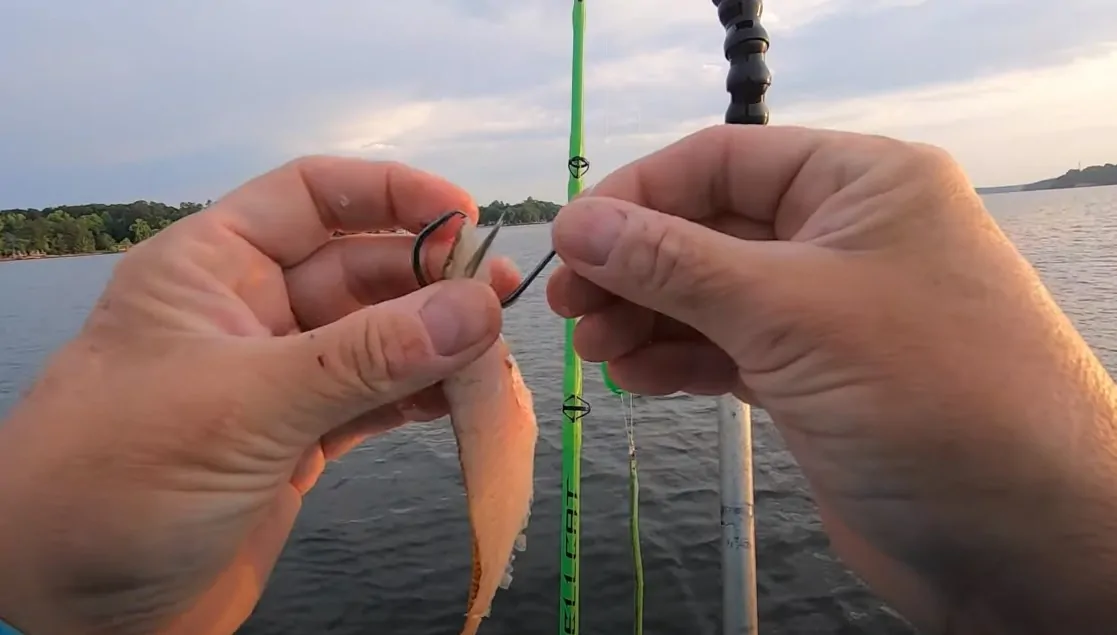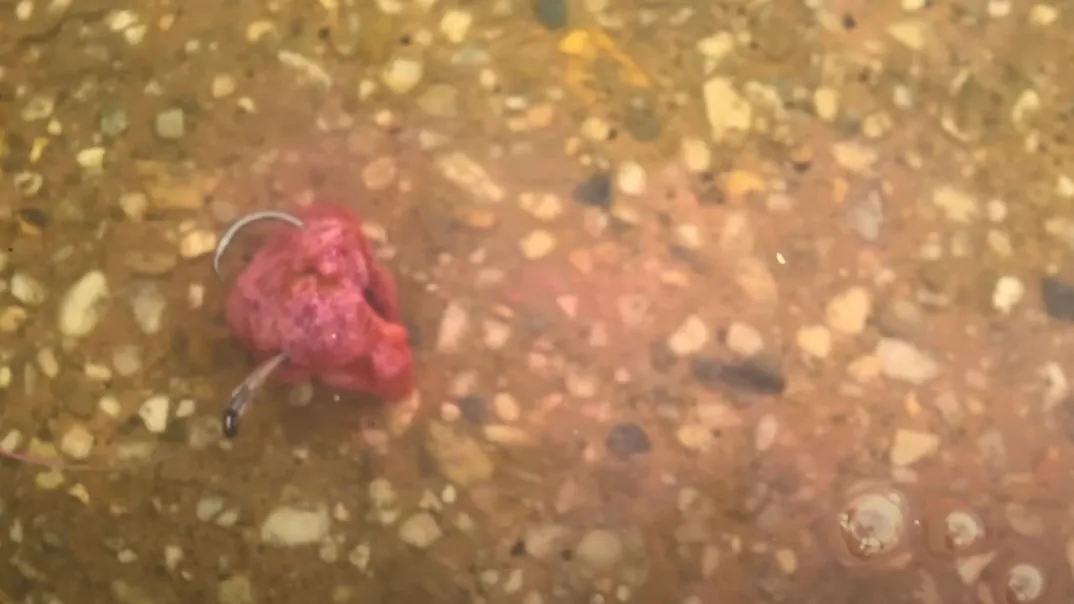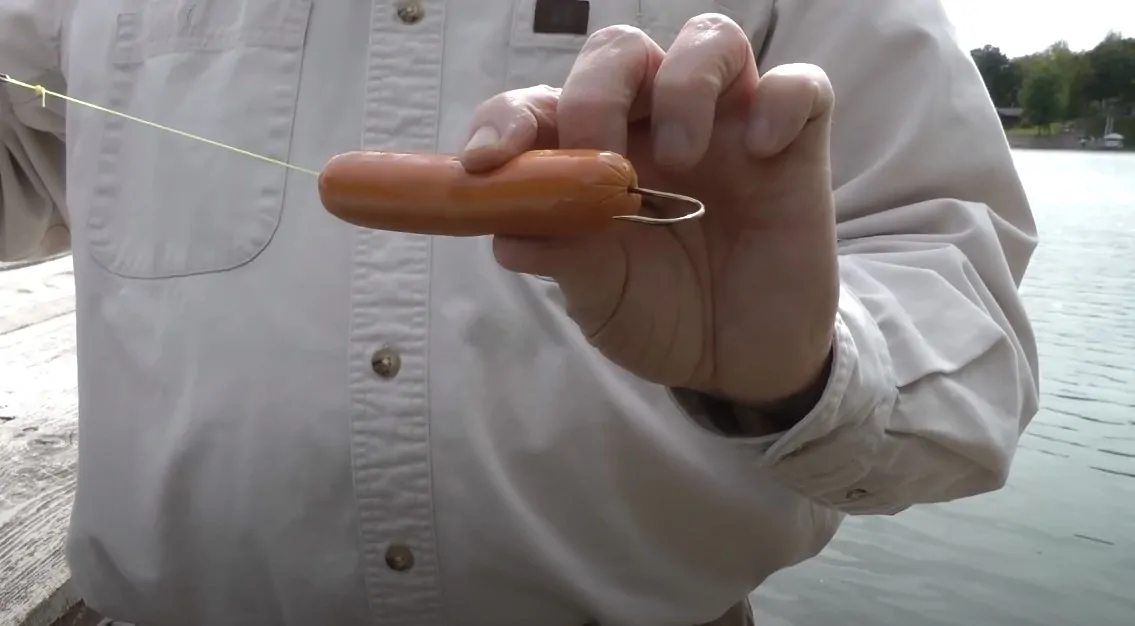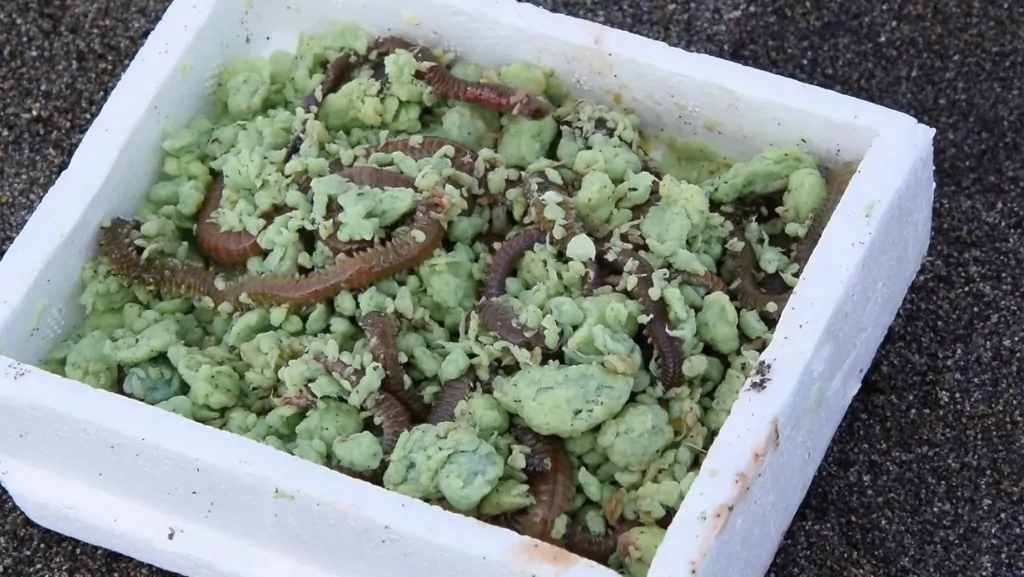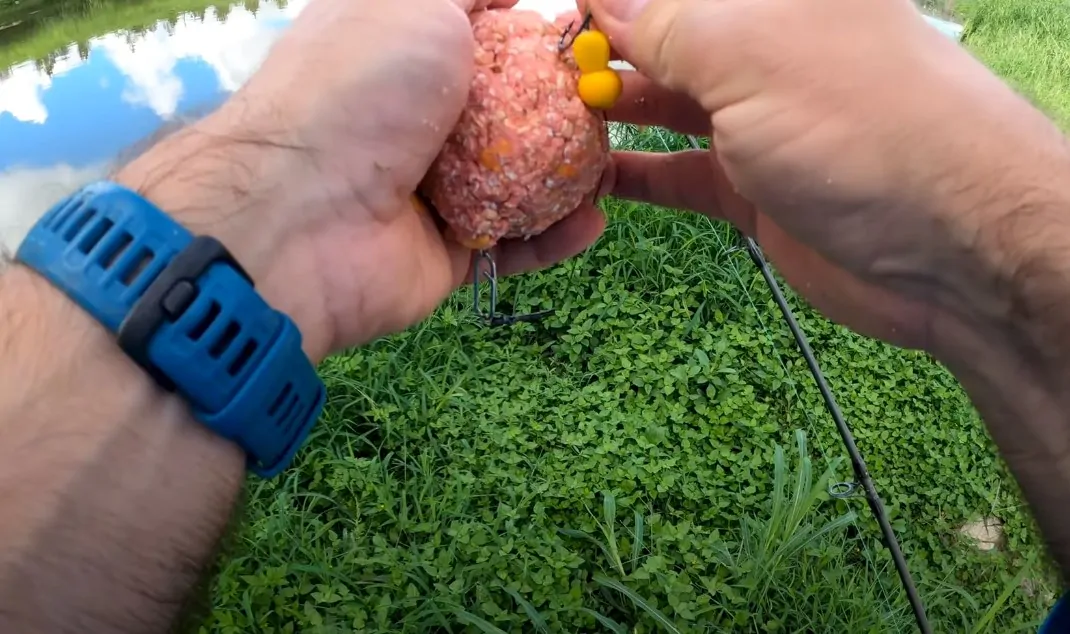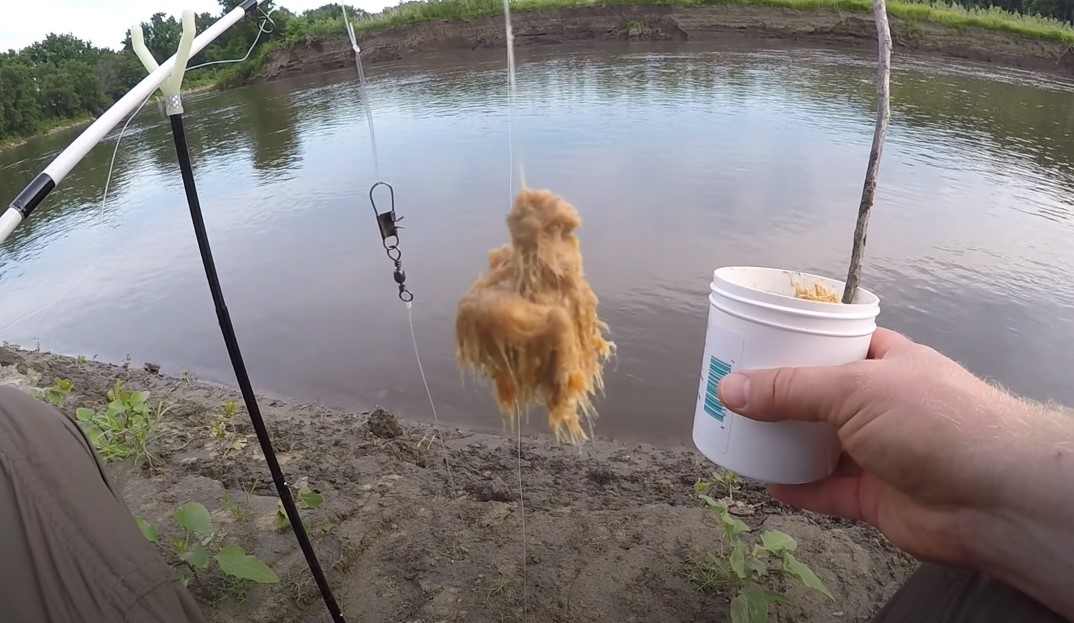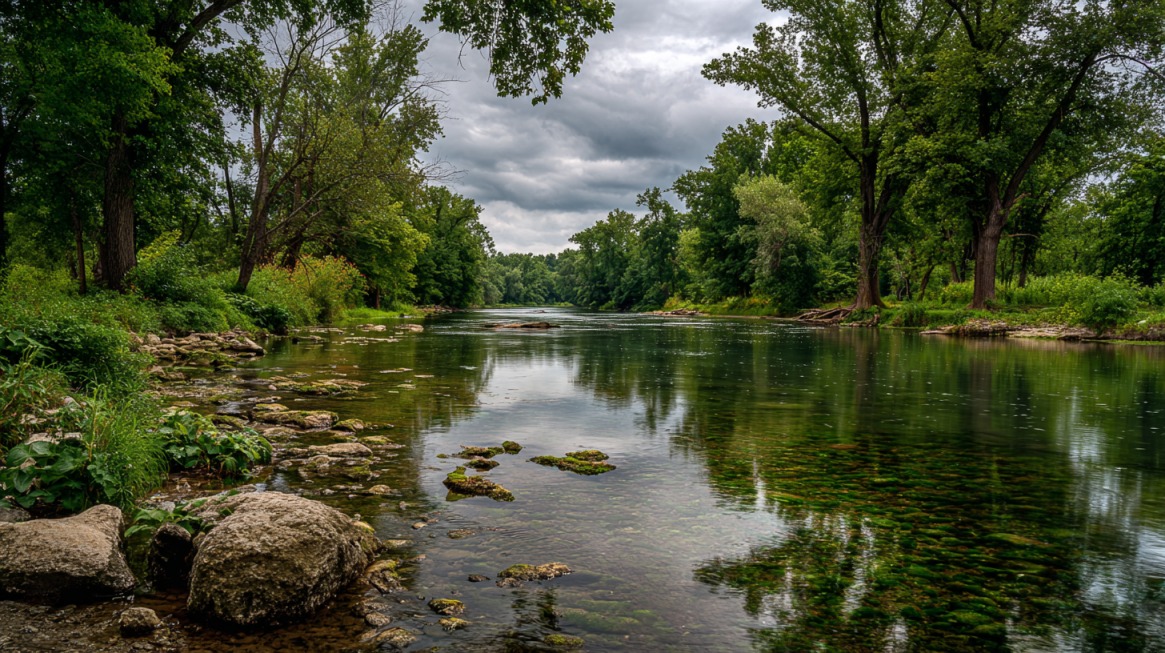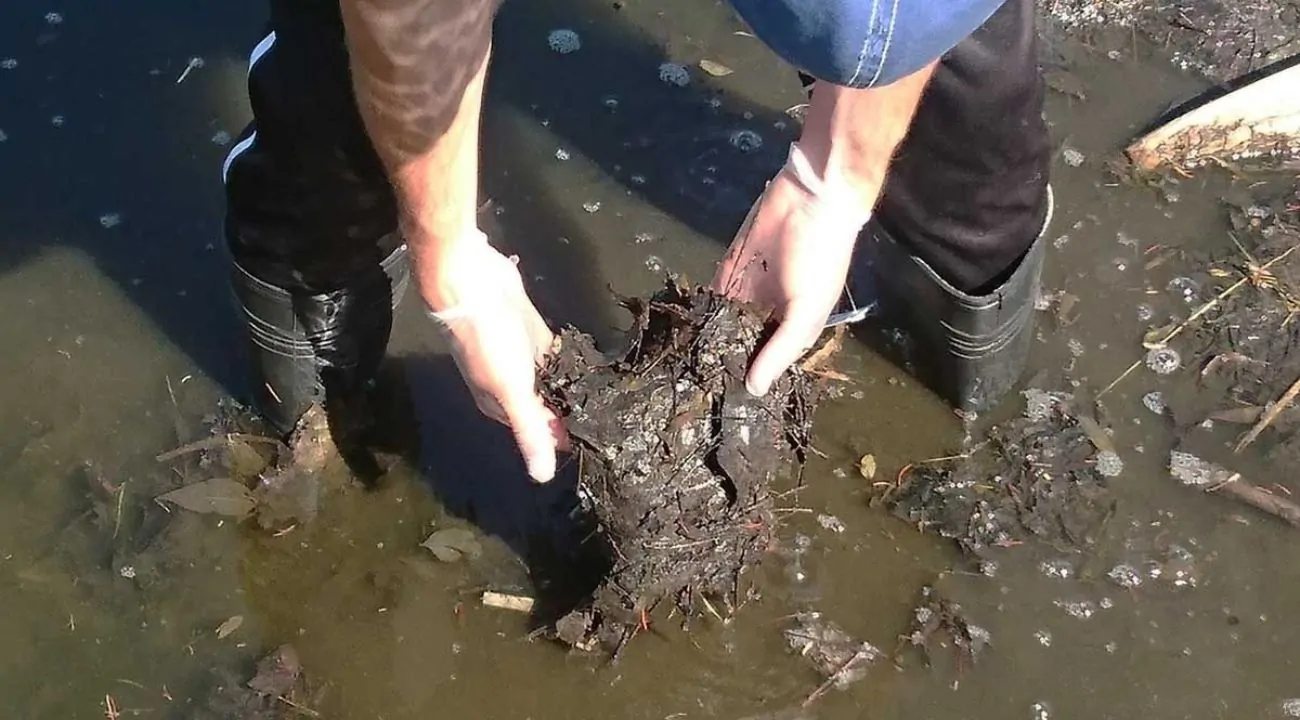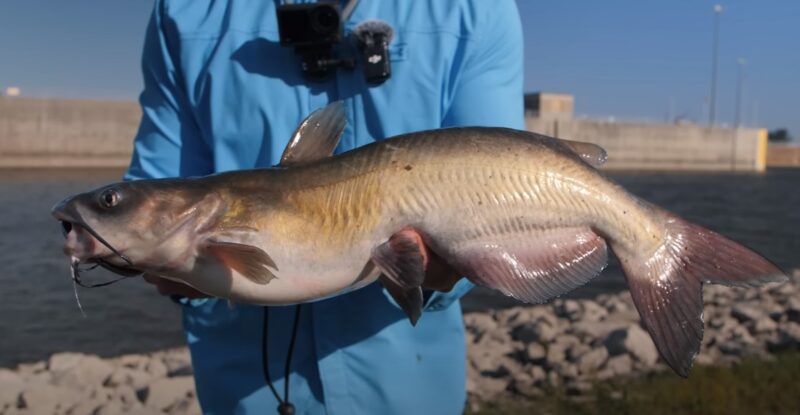
Share Post:
When it comes to fishing for catfish, there’s nothing quite like setting the hook on this lively fish. These powerful swimmers put up one heck of a fight! But just like any fish, cats have their preferences.
What’ll really get nibbling depends on the species and local waters. So whether you’re new to catfishing or an old pro, matching your bait right can make all the difference in bringing some hogs in for dinner.
Let me tell you about some top bait options to up your chances for success.
Table of Contents
Toggle7. Cut Bait
- Cost: If you catch your baitfish like shad or bluegill, the cost is minimal. Buying fresh or frozen baitfish can cost around $5-$10 per pound.
- Effectiveness: High. Cut bait releases strong scents and oils, which attract catfish from a distance.
- Availability: Readily available in waters where baitfish are found. Can also be purchased from bait shops.
- Best Used For Channel catfish and blue catfish.
- Preparation: Requires cutting the baitfish into chunks. Fresh is preferred, but frozen can also work.
Holding large catfish requires a delicate balance of technique and intuition. Cut bait is one of the most effective options for catching catfish, particularly blue and channel catfish. This bait involves using pieces of fish that catfish naturally prey on, such as gizzard shad, bluegill, or herring.
Fresh cut bait is preferred, as it releases more scent and oils into the water, attracting catfish from a distance. If fresh bait is not available, frozen cut bait can also be effective. The strong scent trail created by cut bait makes it an excellent choice for targeting catfish in both rivers and reservoirs.
Chicken liver is a classic bait that has been used by anglers for decades. Its strong smell is highly attractive to catfish, especially channel catfish. Chicken liver can be difficult to keep on the hook due to its soft texture. To solve this problem, anglers often wrap the liver in a small piece of pantyhose or gauze, which helps to secure it on the hook. This method ensures that the liver stays intact while still releasing its enticing scent into the water. Hot dogs are an economical and surprisingly effective bait for catfish. They are easy to find and prepare, making them a convenient choice for many anglers. Hot dogs work particularly well when enhanced with additional flavors, such as garlic powder, red Kool-Aid, or anise extract. These flavors increase the scent profile of the bait, making it even more attractive to catfish. Sliced hot dogs that wiggle in the water can be particularly effective for catching flathead catfish. Using live bait, such as worms, minnows, or smaller fish, can be highly effective for catching catfish. Live bait provides movement and scent, which can trigger the predatory instincts of catfish. If live bait is not available, raw bait such as chicken meat or raw shrimp can also be used. These baits mimic the natural food sources of catfish and can be very effective, especially when targeting larger catfish. Homemade dough baits are a great option for anglers who prefer to make their own bait. These baits are made from ingredients like flour, oatmeal, and cornmeal mixed with water. Dough baits are particularly effective for herbivorous catfish and can be customized with various scents and flavors to increase their attractiveness. Making dough baits at home allows anglers to experiment with different ingredients and find the perfect recipe for their fishing needs. Stink baits and blood baits are known for their strong, pungent odors, which are highly attractive to catfish. These baits are typically made from decaying protein sources, such as blood or other animal parts. Stink baits are especially effective for channel catfish, which rely heavily on their sense of smell to locate food. Anglers can purchase commercial stink baits or make their own using a variety of ingredients. Blood baits, made from congealed chicken or beef blood, are also popular and can be wrapped around treble hooks for easy use. Some anglers have success with less conventional baits, such as old bay shrimp, pickle juice with chicken breast, or cheddar Metts. These unusual baits can be particularly effective because they offer catfish something different from what they usually encounter. The strong flavors and scents of these baits can attract catfish from a distance and entice them to bite. Experimenting with unconventional baits can lead to surprising and successful results. Fishing for catfish requires little observation of their natural diets and a willingness to experiment. The tricks are using aromas and textures that call to what they’re used to finding floating by. Even just sticking with tried-and-true stinky classics can work magic. Most importantly, don’t be afraid to get creative if the regular stuff ain’t biting – those unconventional additions might hold the key to your next big catch. You bait up, tight lines, and good luck out there! With the right ingredients, you’re sure to enjoy the feisty fight these prized fish put up on the end of your line.6. Chicken Liver
5. Hot Dogs
4. Live or Raw Bait
3. Homemade Dough Baits
2. Stink Baits and Blood Baits
1. Unusual Additions
Conclusion
Related Posts:



